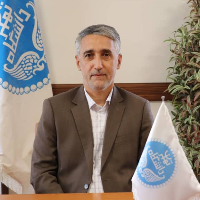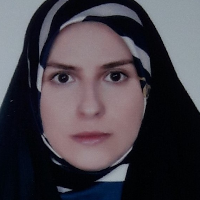An Assessment on Factors Affecting the Quality of Life of Elderly in Rural Regions (Case Study: Neishabour County)
Author(s):
Abstract:
Introduction
The main challenge for health in twenty century was survival، but in the new century the life with a better quality is an important matter. Aging is an emotion period in human life and attention to needs in this period is a social necessity. Therefore، attention to the quality of life of elders is very important in the social policy. The number of the elderly is increasing across the world and Iran is not exception in this regard. Notwithstanding such an increase as a promising issue، neglecting elderliness and world population ageing can make several problems in the future. From a demographic standpoint، although the ratio of young people to the total population in Iran pinpoints a young population، drawing on the 1956 census، Iran’s population is aging. Around 6. 2% of the population in 1966، 6. 5% in 1976، 5. 2% in 1986، 5. 4% in 1996، 7. 3% in 2006، and 8. 3 in 2011 aged over 60 (Statistical Center of Iran، 1956-2011). It is projected that the percentage of the elderly to the total population will reach 10. 5% in 2025 and surge to 21. 7% in 2050. Having said this، there is no room for neglecting the needs of elderly and planning for improving the Quality Of Life (QOL) of elderly seems to be necessary. Methodology
The present study elicited data using a predefined questionnaire delivered to study subjects by the researcher، and the data was then analyzed using the SPSS software. A total number of 150 elders aged 60 and over from 9 villages of the Neishabour County were selected using the Cochran formula. Study Area. In 2006، elderly represented 7. 27% of the total population in Iran. This figure was 10. 33% for the Khorasan-razavi province and for the Neishabour county 10. 04%. According to 2006 census، the total population of elders in the Neishabour county was 39902، 16543 of whom were male and 23359 female. Breakdown of population of elders over 60 in rural and urban districts also show that the rural elders represent a high proportion of the total population in this city. The population of elders in rural regions is 21728 (54. 5%)، while that of urban elders is 12165 (45. 5%). Findings. In the present research factor analysis was used to identify dimensions of QOL of elderly in rural regions of the Neishabour county. Factor analysis is a statistical technique which is normally exploited for extraction of non-dependent subset of reagents explaining the observed variance in a set of initial data. The reagents used in factor analysis included 36 subjective reagents which have been complied in a survey from the elderly in the studied region. The KMO coefficient as well as the Bartlett test were used for investigating the suitability of the data for factor analysis. For the present study، the KMO value equaled 0. 849 and the Bartlett test enjoyed a significance level about 0. 000 indicating the suitability of the data for factor analysis. The results attained from factor analysis manifested 10 key factors in determining subjective dimensions of QOL of the elderly. The 10 key factors constituted 74. 016 percent of the total variance، of which the first factor was the most important with 19. 250 percent of the total variance. Further، a high internal reliability which equaled 0. 851 was achieved for the subjective dimensions of QOL. Discussion and Concluding Remarks: Accessibility and quality of sanitary services which comprise ease of access to sanitary services، contentment with one’s access to sanitary services and benefiting from such services also exert a vital influence on QOL of the rural elderly. Rural elderly are in a good condition in terms of their access to health services yet they are deprived in terms of their benefit from such services not receiving much attention. Social factors such as intimate relations with neighbors، contentment with conditions of residence، participation in friendship groups and contentment with relations with other people also play a crucial role in QOL of the rural elderly. Furthermore، social relation networks such as contact with friends and acquaintances and profiting from their support could exert major influences on QOL of the elderly. Given the small milieu where rural elders live، their familiarity with each other، face-to-face relations، the need for teamwork as well as a sense of belonging to the place they reside، they enjoy desirable social relations which consequently augment their QOL. Social cohesion، e. g. having someone to pour their heart out for them، participation in religious and group activities is also of vital effectiveness. Social interaction among the studied elderly is relatively high given that activities in rural regions require teamwork; this teamwork leads to participation in the affairs of the team; hence، social interaction increases as a result of the aforesaid reasons. Further، grounded on the statistical results، no significant relationship could be observed between QOL and gender، age، housing status، life accompaniers، ownership of vehicles، natural position of the village as well as distance from cities. Since the majority of the elderly in the studied sample was deprived of official education and was illiterate، it is not possible to draw any conclusive conclusions on the correlation between education and QOL of the elderly in the present study. Based on the obtained statistical data، literacy is very low among the rural elderly influencing all economical، social، and cultural aspects of people’s life in the investigated area. No correlation was also found between gender and QOL given that a large number of males are employed in agriculture-animal husbandry and most females are housewife. On the other hand، there exists a significant relationship between QOL and marital status، monthly income of the elderly، as well as their income sources.Language:
Persian
Published:
Journal of Rural Research, Volume:4 Issue: 2, 2013
Pages:
301 to 326
magiran.com/p1199674
دانلود و مطالعه متن این مقاله با یکی از روشهای زیر امکان پذیر است:
اشتراک شخصی
با عضویت و پرداخت آنلاین حق اشتراک یکساله به مبلغ 1,390,000ريال میتوانید 70 عنوان مطلب دانلود کنید!
اشتراک سازمانی
به کتابخانه دانشگاه یا محل کار خود پیشنهاد کنید تا اشتراک سازمانی این پایگاه را برای دسترسی نامحدود همه کاربران به متن مطالب تهیه نمایند!
توجه!
- حق عضویت دریافتی صرف حمایت از نشریات عضو و نگهداری، تکمیل و توسعه مگیران میشود.
- پرداخت حق اشتراک و دانلود مقالات اجازه بازنشر آن در سایر رسانههای چاپی و دیجیتال را به کاربر نمیدهد.
In order to view content subscription is required
Personal subscription
Subscribe magiran.com for 70 € euros via PayPal and download 70 articles during a year.
Organization subscription
Please contact us to subscribe your university or library for unlimited access!



